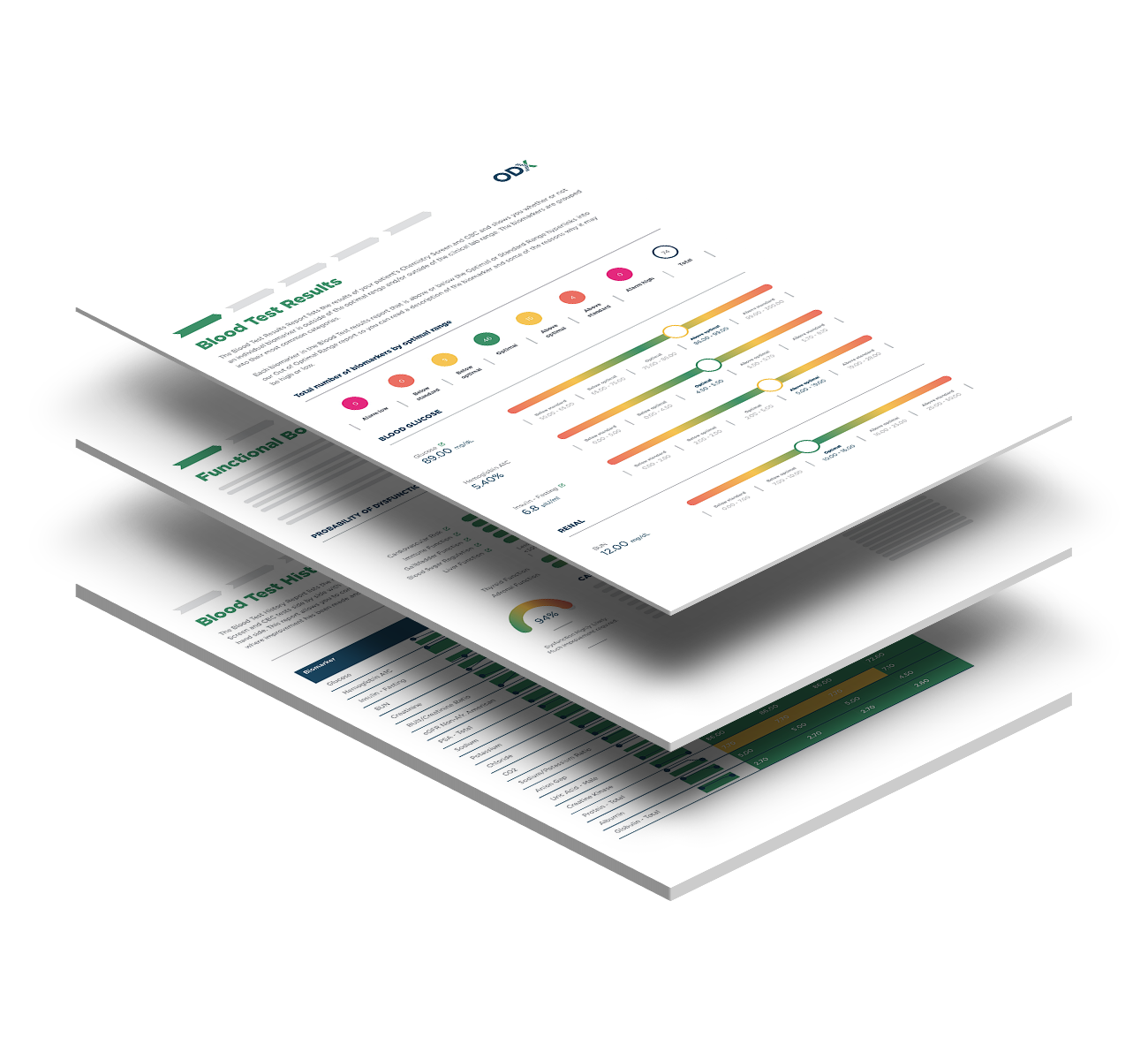Neutrophils are not neutral in COVID-19
Dicken Weatherby, N.D. and Beth Ellen DiLuglio, MS, RDN, LDN
Neutrophils are the first white blood cell responders during an infection. Lymphocytes are the white blood cells that become B cells or T cells. Calculating the ratio between them provides important clues to inflammatory state and prognosis in COVID-19.
The ODX COVID-19 Series
- COVID-19: The pandemic that has become endemic
- COVID-19: Overlapping risk factors and chronic disease
- Nutritional status COVID-19: A covert factor in disease susceptibility
- COVID-19: Blood chemistry biomarker patterns - Clues and patterns lurking just under the surface
- COVID-19: Blood chemistry biomarker patterns - Down the research rabbit hole
- COVID-19: Blood Biomarkers - Neutrophils
- COVID-19: Blood Biomarkers - Albumin
- COVID-19: BloodBiomarkers - Cytokines
- COVID-19: Blood Biomarkers - Interleukin-6
- COVID-19: Blood Biomarkers - Interleukin-10
- COVID-19: Blood Biomarkers - Vitamin C
- COVID-19: Blood Biomarkers - Vitamin D
- COVID-19: Blood Biomarkers - Zinc
- Biomarker characteristics and blood type - help sharpen the COVID-19 clinical picture
- COVID-19: Initial indications and conventional interventions
- COVID-19: Long-term risk reduction - Naturopathic, functional medicine, and nutrition-based approaches to prevention
- A healthy diet is primary prevention for COVID-19
- You should have a gut feeling about COVID-19
- Beyond dietary food patterns…plant-based compounds may mitigate COVID-19 risk
- Targeted nutrition support in the battle against COVID-19
- Targeted nutrition support in COVID-19: Armed with vitamin C
- Targeted nutrition support in COVID-19: In sync with zinc
- Targeted nutrition support in COVID-19: Micronutrients and phytonutrients are important players
- Optimal Takeaways for improving immunity and reducing susceptibility to COVID-19
- Optimal - The Podcast: Episode 8 -Blood Biomarkers and Risk Factors for COVID-19 and its Comorbidities
Neutrophil:Lymphocyte Ratio (NLR)
The neutrophil-lymphocyte ratio serves as a biomarker of inflammation.
When comparing severe to non-severe COVID-19 cases, a meta-analysis of 15 studies revealed that individuals with severe COVID-19 presented with higher neutrophils and neutrophil:lymphocyte ratios, and lower lymphocyte counts.[i]
Meta-analysis of 13 studies comprising 1579 patients found that NLR provided good predictive value for assessing disease severity and mortality in COVID-19. For disease severity, the positive likelihood ratio was 3.6 (negative likelihood at NLR 0.2) and for mortality, the positive likelihood ratio was 4.8, though some studies established a “high cutoff value” of 6.5 or greater.[ii]
In an Italian cohort of 74 hospitalized COVID-19 patients, a median NLR of 5.6 was associated with severe disease, and an NLR greater than 4 was associated with transfer to the ICU. An NLR below 3 was associated with clinical improvement.[iii]
One study of 81 COVID-19 patients found that an NLR of greater than 9.8 was associated with significantly higher rates of acute respiratory distress syndrome and mechanical ventilation.[iv]
A retrospective study of 139 hospitalized COVID-19 patients considered NLR values to be independent predictors of disease severity and mortality with optimal thresholds of 3.27 and 5.72, respectively. The study also found BUN/Creatinine ratios independently predicted severe disease and mortality with optimal thresholds of 33.5 and 51.7, respectively. A number of lab parameters differed significantly between severe and non-severe disease: [v]
| Biomarker | Severe | Non-severe |
| BUN | 46 | 23.8 mg/dl |
| BUN:Creatinine ratio | 50.3 | 24.2 |
| CRP | 53.6 | 14.2 mg/dl |
| Lymphocyte count | 1.16 | 1.48 10^9/L |
| Monocyte:Lymphocyte ratio | 0.4 | 0.27 |
| Neutrophil count | 6.33 | 3.99 10^9/L |
| Neutrophil:Lymphocyte ratio | 6.1 | 2.46 |
| WBC - Total | 8.1 | 6.1 10^9/L |
Optimal Takeaway
Assessing and monitoring the neutrophil:lymphocyte ratio is an invaluable tool for gauging severity and potential improvement in COVID-19.
Next Up - COVID-19: Blood Biomarkers - Albumin
Research
[i] Zeng, Furong et al. “Can we predict the severity of coronavirus disease 2019 with a routine blood test?.” Polish archives of internal medicine vol. 130,5 (2020): 400-406. doi:10.20452/pamw.15331
[ii] Li, Xiaoming et al. “Predictive values of neutrophil-to-lymphocyte ratio on disease severity and mortality in COVID-19 patients: a systematic review and meta-analysis.” Critical care (London, England) vol. 24,1 647. 16 Nov. 2020, doi:10.1186/s13054-020-03374-8
[iii] Ciccullo, Arturo et al. “Neutrophil-to-lymphocyte ratio and clinical outcome in COVID-19: a report from the Italian front line.” International journal of antimicrobial agents vol. 56,2 (2020): 106017. doi:10.1016/j.ijantimicag.2020.106017
[iv] Gallo Marin, Benjamin et al. “Predictors of COVID-19 severity: A literature review.” Reviews in medical virology, e2146. 30 Jul. 2020, doi:10.1002/rmv.2146
[v] Ok, Fesih et al. “Predictive values of blood urea nitrogen/creatinine ratio and other routine blood parameters on disease severity and survival of COVID-19 patients.” Journal of medical virology, 10.1002/jmv.26300. 14 Jul. 2020, doi:10.1002/jmv.26300






